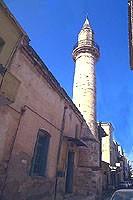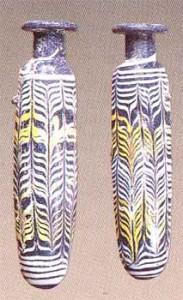Chania History
The new city was founded in 1252 by the Venetians and was built on top of the former Minoan ruins; it was renamed La Canea.
 Ancient Kydonia, as Chania was once known, was one of the most eminent cities of Minoan Crete. Minoan houses from the city’s center have been excavated, together with rock-cut chamber tombs; also, a Minoan villa decorated with wall paintings. The new city was founded in 1252 by the Venetians and was built on top of the former Minoan ruins; it was renamed La Canea. On the site of the ancient acropolis, they constructed the Kastelli fortress, which surrounded the homes of the Venetian noblemen. An outer Ancient Kydonia, as Chania was once known, was one of the most eminent cities of Minoan Crete. Minoan houses from the city’s center have been excavated, together with rock-cut chamber tombs; also, a Minoan villa decorated with wall paintings. The new city was founded in 1252 by the Venetians and was built on top of the former Minoan ruins; it was renamed La Canea. On the site of the ancient acropolis, they constructed the Kastelli fortress, which surrounded the homes of the Venetian noblemen. An outer  wall in turn, surrounded the fortress. Fearing a raid by the pirate Barbarossa in the late 15th Century, another wall was built, this one surrounding the entire town, together with an outer moat of 45 meters (135 ft) in width, and 9 meters (27 ft) in depth. However, in spite of all of these precautions and less than 60 years after the completion of the final section of the wall, the town eventually came under Ottoman rule in 1645, and remained so until 1913, when the Greek flag was raised at Firkas Fortress, and Crete was officially annexed to Greece. These lengthy occupations have effectively left their mark on the town, and contribute a great deal to its unique charm and beauty. wall in turn, surrounded the fortress. Fearing a raid by the pirate Barbarossa in the late 15th Century, another wall was built, this one surrounding the entire town, together with an outer moat of 45 meters (135 ft) in width, and 9 meters (27 ft) in depth. However, in spite of all of these precautions and less than 60 years after the completion of the final section of the wall, the town eventually came under Ottoman rule in 1645, and remained so until 1913, when the Greek flag was raised at Firkas Fortress, and Crete was officially annexed to Greece. These lengthy occupations have effectively left their mark on the town, and contribute a great deal to its unique charm and beauty.
In 1941, the Germans bombed Chania, destroying a large section of the old walls and the town. While they won the Battle of Crete, they lost the very best of their commando parachute forces and six months of precious time, a disastrous delay that led to their fiasco in Russia, with troops stranded in the deep mud and in the midst of the heavy Russian winter. Today, the anniversary of the battle is commemorated in Chania; it is known as the Chania Festival, and runs from the middle to the end of May. |
|



